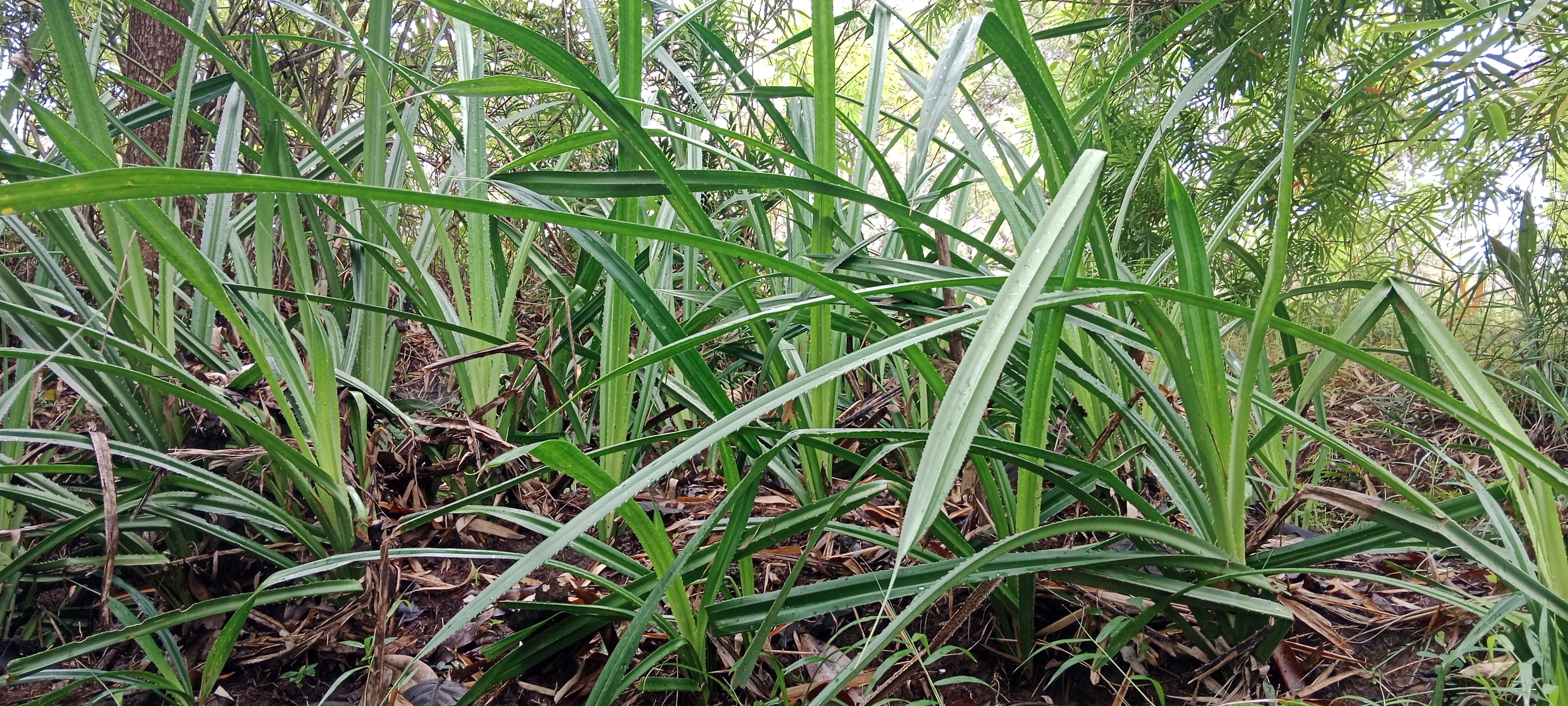Pandanus odorifer, also known as fragrant screw pine, kewda, or ketaki, is a tropical plant renowned for its distinctive aroma, ornamental appeal, and cultural significance. Native to South and Southeast Asia, this versatile plant plays important roles in traditional medicine, perfumery, environmental conservation, and even culinary practices.
What Is Pandanus odorifer Used For?
1. Fragrance and Perfumery
The male flowers of Pandanus odorifer produce a
sweet, floral scent that is highly valued in the fragrance industry:
- Kewda
oil is extracted through steam distillation and used in the production
of perfumes, incense, and aromatherapy products.
- Kewda
water (hydrosol) is commonly used in India to scent foods, cosmetics,
and ceremonial items.
2. Traditional Medicine
Various parts of the plant are used in Ayurvedic and folk
medicine systems:
- Leaves:
Traditionally applied to reduce fever and headaches.
- Roots
and bark: Used in decoctions for treating rheumatism and urinary
issues.
- Flowers:
Believed to have cooling and diuretic properties, and used in herbal
infusions.
3. Culinary Uses
While Pandanus odorifer is less commonly used in
cooking compared to Pandanus amaryllifolius, its essence is still used
in:
- Flavoring
sweets and beverages (such as sharbat or desserts in Indian cuisine).
- Infusing
rice and puddings with a floral aroma, when used in very small
quantities.
4. Handicrafts and Weaving
The tough, fibrous leaves are traditionally dried and woven
into:
- Mats
- Baskets
- Hats
- Ropes
This practice is particularly common in coastal and rural
communities across India, Bangladesh, and Southeast Asia.
5. Environmental and Ornamental Use
- Pandanus
odorifer is often planted along coastlines and riverbanks for erosion
control and windbreaks.
- It
serves as a natural barrier and is used in landscaping due to its
dramatic appearance and resilience in saline soil conditions.
What Is Pandanus odorifer Good For?
Pandanus odorifer is valued for both its practical
and therapeutic properties:
- Natural
Fragrance: A sustainable and non-synthetic option for perfumes and
aromatics.
- Health
Support: Used in traditional medicine for its anti-inflammatory,
antimicrobial, and cooling properties.
- Eco-Friendly
Material: Provides renewable, biodegradable fiber for crafts and
construction.
- Erosion
Control: Stabilizes soil in coastal and flood-prone areas.
- Cultural
and Religious Uses: The flowers are offered in Hindu rituals and
festivals due to their fragrance and symbolism.
How to Use Pandanus odorifer
1. For Aromatherapy and Fragrance
- Add kewda
oil to diffusers or massage oils for a calming and floral scent.
- Use kewda
water to scent linens, bathwater, or traditional dishes.
2. In Culinary Practices
- Add a few
drops of kewda essence to desserts like rasgulla, rabri,
or falooda for a rich floral flavor.
- Use
the leaves (if available) to wrap rice or meats for steaming,
imparting a light aroma.
3. In Herbal Remedies
- Prepare
a herbal infusion from dried flowers or leaves (consult a
practitioner for safe use).
- Apply
diluted kewda oil topically for traditional treatment of joint pain
or chest congestion.
4. For Crafting
- Dry
and cure the leaves before weaving into eco-friendly products like
baskets or mats.
Conclusion
Pandanus odorifer is a plant of remarkable
versatility, valued for its aromatic flowers, traditional healing properties,
and sustainable material uses. From its role in perfumery and medicine to its
practical applications in erosion control and handicrafts, it continues to be
an essential resource in many Asian cultures. With rising interest in natural,
eco-conscious products, the benefits and uses of Pandanus odorifer
remain both relevant and valuable in today's world.
References for Pandanus odorifer:
- Kumar,
V., et al. (2015).
Phytochemistry and therapeutic potential of Pandanus odorifer (Forssk.) Kuntze – A review.
Journal of Pharmacognosy and Phytochemistry, 4(3), 181–185.
[Available on ResearchGate or academic databases] - Wealth
of India – Raw Materials Series.
Published by the Council of Scientific & Industrial Research (CSIR), Government of India. - This
series provides detailed entries on medicinal and economically valuable
plants, including Pandanus odorifer.
- Kirtikar,
K.R., & Basu, B.D. (1935).
Indian Medicinal Plants. - Classic
reference used in Ayurveda and botany to document traditional uses of
Indian flora.
- National
Medicinal Plants Board (NMPB), Ministry of AYUSH, Government of India.
- Offers
insight into the traditional and medicinal uses of plants including Pandanus
species.
- FAO
(Food and Agriculture Organization of the United Nations).
- Has
documents and case studies on the use of Pandanus species for
weaving, erosion control, and rural livelihoods in South Asia and the
Pacific.




